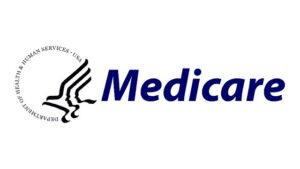You may have heard by now that there are proposed cuts to Social Security and are not sure if this true or not, well, unfortunately, it is actually true.
Social Security is in trouble.
Before diving into the who’s and what’s of these proposed cuts to Social Security it must be stated that something needs to be done really soon as the program is in big trouble on paper.
Since 2018 the part of the Social Security program that provides retirement benefits (OASI) is and will be running at a loss each and every year.
This means that the amount of benefits that the OASI is providing to retirees is greater than the amount of money that the program brings in.
To provide some clarity on this huuuuge problem:
In 2018, according to the Trustees of Social Security:
- The total cost to provide benefits within the OASI program = $853.4 million.
- Total revenue for that year = $831.0 million.
There is an obvious shortfall of $22 million and the problem is not getting better, in fact the gap between benefits verse revenue is widening.
By 2022, according to the Trustees, the problem became:
- The total cost to provide benefits within the OASI program =. $1,097.5 billion
- Total revenue for the year = $1,056.7 billion.
The shortfall grew to $40.8 million in just 4 years and, again, the problem is growing larger annually.
The Trustees of Social Security, in its 2023 Annual Report, is reporting that:
- The costs to run the program are going to inflate by over 6.40%
- The revenue to provide benefits is only going to grow by 4.90%.
At these rates by 2032 the shortfall for the OASI part of Social Security will be $428.3 billion!
This is why the media is reporting that by 2032 the Social Security program may become insolvent.
Is Social Security really going broke?
What are the current proposed cuts to Social Security?
The Social Security Administration has 9 proposals for cuts to the program which all begin by the end of 2024 and they are:
1st Proposal: Reduce the annual COLA by 1 percentage point.
- This option will decrease Social Security benefits for retirees.
2nd Proposal: Reduce the annual COLA by 0.5 percentage point.
- Like Option #1, this proposal will decrease Social Security benefits for retirees. The only difference is the decrease will be half of Option #1.
3rd Proposal: Compute the COLA using a chained version of the consumer price index for wage and salary workers (CPI-W).
- The Social Security cost of living adjustment (COLA) uses the 3rd Quarter monthly averages of the Consumer Price Index for Workers (CPI-W).
- Social Security takes the averages of these 3 months in the 3rd Quarter and compares them to the previous year’s 3rd Quarter.
- If the average is greater than the previous year, then there will be a COLA for those receiving benefits.
- Chained Weighted CPI-W is a more accurate average where certain averages are disregarded if they are not in the norm.
- This proposal will decrease benefits going forward.
4th Proposal: Compute the COLA using a chained version of the consumer price index for wage and salary workers (CPI-W) but start it in 2026 instead of 2024.
- This proposal will decrease Social Security benefits for retirees, but will start 2 years later.
5th Proposal: Add 1 percentage point to the annual COLA for beneficiaries who have lived past a “specified age”.
- It appears that only certain retirees who are a certain age and older will receive a COLA going forward.
- This proposal may lower benefits across the board for retirees, but the good news, those retirees who reach the specific age may receive a COLA that would be higher than before.
6th Proposal: Compute the COLA using the Consumer Price Index for the Elderly (CPI-E).
- The CPI-E tracks the expenses specifically for Americans who are 62 years of age or older.
- Historically this Index is much lower than what the Social Security Administration uses and may lead to lower Social Security benefits for retirees.
